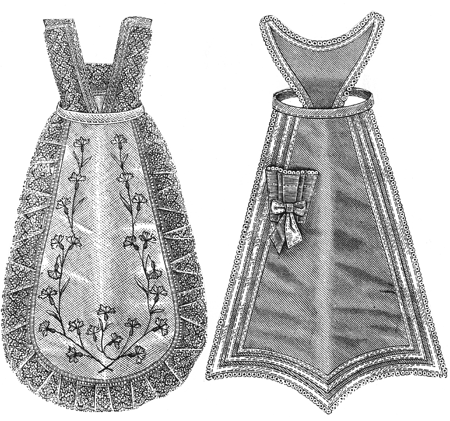Aprons are a basic part of any working woman’s attire. They cover the dress and act as barriers, protecting the dress from dirt and dust. Women of Victorian Era wore hand stitched clothes, with heavy fabrics, making the need of aprons even more prominent. An advertisement from that era, stresses the need for aprons, Many ladies know how important it is that the girls should be properly outfitted with all things necessary to keep them neat and tidy.
This outfit is often a matter of some difficulty in a large and poor family, and a few gifts of useful garments are an immense boon. A present of four of Strong aprons would be gratefully received by any young servant. The pattern given is suitable for a young woman of 16 or 17, and the cost is as follows:
During the Victorian times, the Aprons were usually made out of linen; Pongee or Surah silks were often chosen instead of linen.

It has been maintained that the bottom of this garment came from below the knee in length with approximately 44 to 58 in width depending on the waist size, the simple finish being a deep hem, with the threads drawn and caught in a network fashion. The apron was tied at the back by a belt made of logs ties of ecru ribbon.
They had a top bib (pocket) section that could be held up by boning, in addition, the Victorian Era apron was equipped with additional hidden buttonholes to the back of the bib. The aprons were intricately designed with Greenaway designs done in many colored crewels (threads) with elegant floral patterns that added beauty to their overall nature. These patterns were usually of a single uniform colour, but it depended on the styles and tastes of the particular seamstress (dress/ aprons maker).
A book, providing instructions to the usage of appropriate work aprons written in 1901, highly recommends a sewing apron while embroidering or creating any other fancy work.
The experts from the book claim, a convenient work apron should be long enough to nearly, if not quite, cover the skirt, and the hem should be turned up on the right side to a depth of twelve inches and caught down at regular intervals from the ends, to form pockets for threads, small embroidery hoops, piercer, stiletto, and the smaller articles one uses most frequently in embroidering.
